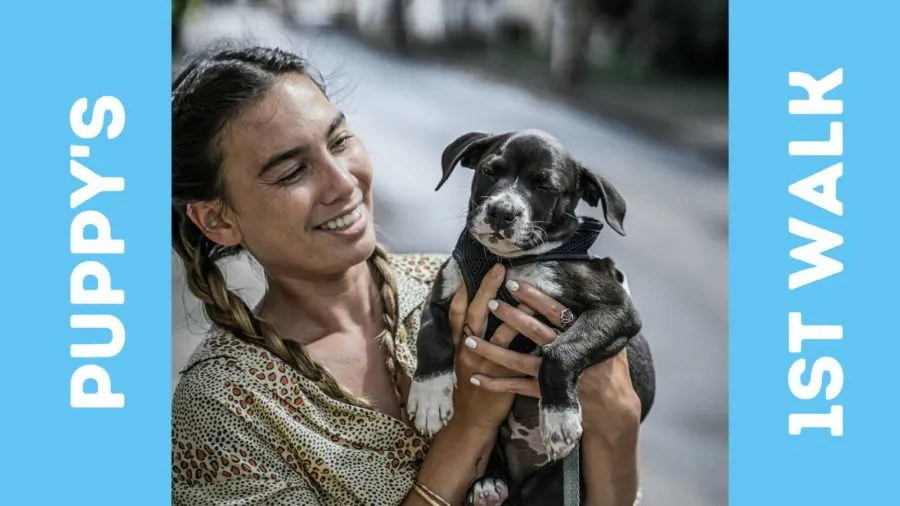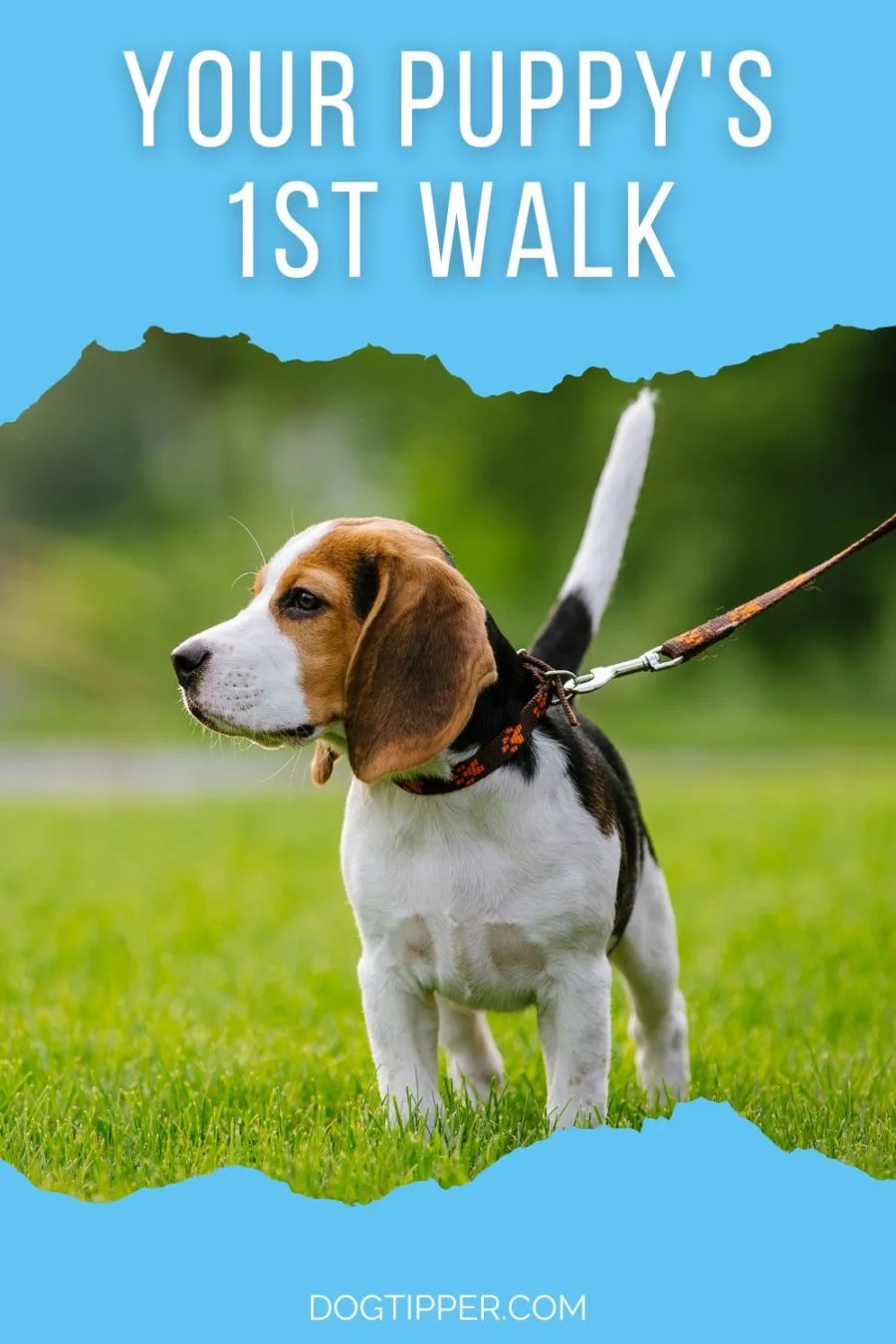Your puppy’s first dog walk is one that will set the stage for a lifetime of dog walks enjoyed together. Today we have a guest post from dog trainer Michael Schaier, owner of Michael’s Pack, about the importance of starting your puppy’s walks off on the right paw!

If you’ve never shared your life with a dog before, you may be surprised to learn that going on a walk is not a natural behavior that a puppy will automatically understand. It is a behavior that needs to be learned with your help.
For some dogs, going for a walk can leave them feeling anxious and uncertain when they are bombarded with new sites, sounds, and smells all at once.
It is exciting getting to take your new puppy for a walk, but it is also important to be prepared.
Get All The Proper Vaccinations
When you bring your puppy out for their first walk, you may encounter other dogs or you may choose to actively introduce them to other dogs for early socialization.
This is all well and good, but if a puppy is not properly vaccinated, it opens them up to contracting serious health problems. You can start vaccinating a puppy as early as six weeks of age.
The core vaccines every puppy should get protect them against a litany of diseases including distemper, canine infectious hepatitis, and parvo.
Also talk to your veterinarian about vaccinations against kennel cough and dog flu.
Many vaccinations require boosters every three to four weeks so getting started as early as possible is a good idea.
Start Socializing Puppies Early
As mentioned in the previous section, dogs will interact with other dogs during walks.
Introducing your puppy to other dogs in controlled environments before taking him out into the big wide world will help to get your puppy accustomed to seeing other dogs so he doesn’t feel scared or anxious.
If you don’t have another dog, consider introducing your puppy to a friend’s vaccinated dog or look into puppy classes with other puppies present.
Puppies are best socialized between eight and sixteen weeks of age. Make the sessions short but frequent if possible.
On top of socializing with other dogs, invite friends or family over so your dog can interact with a variety of different people as well.
Consider Obedience Training
Training your dog even basic obedience commands such as “start” and “stop” can make your first walk much less unpredictable.
Consider hiring an experienced dog training service in the fundamental early weeks of the puppy’s life to nail down several of the important obedience commands.
Proper puppy training early on can have a positive impact on their walking development.
It is also important that you utilize only positive reinforcement dog training. Never yank or pull on the leash or harness and, if at some point they start leading and pulling you, just stand still until they settle.
Rewards of treats and affection are encouraged to tie good behavior to something positive.
Choose the Right Collar or Harness for Your Puppy
There are many leashes, leads, collars, and harnesses on the market, so how can you know which is the best option for you and your pup?
There are no right or wrong answers but different types of equipment are good for different things. With a collar, pulling on the leash will put all the force on your dog’s neck which can cause issues.
A harness balances out the force from pulling into the puppy’s midsection which is less likely to cause damage if they end up pulling a lot.
For larger dogs, a leash and collar will make it easier to get control if they end up pulling a lot, but for smaller dogs, a harness should do the trick in any situation.
It is also a good idea to get your puppy used to wearing the collar or harness so she isn’t overwhelmed when you put it on to finally go on your first walk.
Make sure you check your puppy’s collar or harness regularly to ensure that it is not getting too tight or causing discomfort.
Practice Proper Walk Behavior Indoors
Start moving around the house and encourage your puppy to follow.
Provide positive reinforcement when they follow you but ignore them if they start to pull or stop.
Wait for your puppy to come to you before continuing.
If you do this frequently, they will soon learn that pulling will get them nowhere and they will calmly follow you at the pace you set.
Start With a Short, Planned Walk
Planning your walk out in advance will help you test your puppy’s socialization skills and how he handles being outside.
Pay close attention to how your puppy reacts to things. Is something making him nervous? Keep a mental note so you can address that in the future. However, don’t be afraid to let him explore a little and get acclimated to the outside world.
It is important to be patient when going on your first few walks.
You may need to stop in order to remind your pup not to pull on the leash, but he will learn through repetition that he shouldn’t go too far.
Practice walking your puppy regularly and consistently and you’ll have a wonderful walking partner in no time.

About the Author
Michael’s Pack is owned by professional dog trainer Michael Schaier, who offers in-home dog training in New Jersey and New York, as well as personal and group sessions at their facility in Mineola, Long Island and through online dog training services.
- Selecting the Best Online Emotional Support Animal Letter Service - December 14, 2023
- How to Store Dog Toys –10 Solutions to Organize Those Toys! - July 7, 2022
- Best Practices to Puppy-Proof Your Home - June 27, 2022
